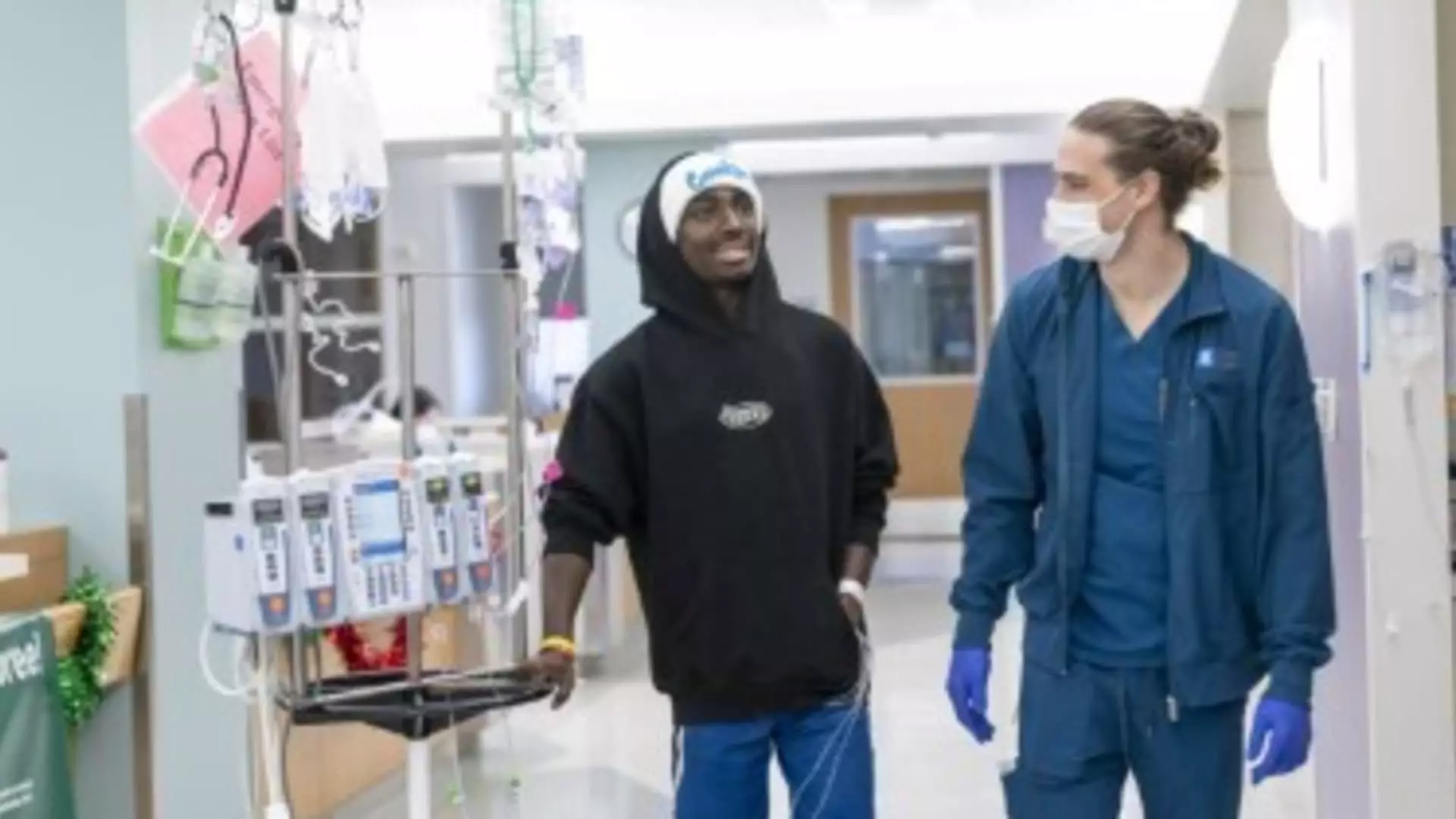For many individuals, living with chronic medical conditions can often feel like a journey through a labyrinth of uncertainty, suffering, and frustration. Deshawn “DJ” Chow, a 19-year-old boy afflicted by sickle cell disease, provides a poignant example of this struggle. Since his early teenage years, DJ has been trapped in a cycle of excruciating pain episodes, which severely limited his education and normal teenage experiences. “It’s just been hard skipping school and always being in and out of the hospital,” DJ shared. His words encapsulate the grim reality faced by many patients who endure hospital visits as frequent stops on the road of life.
Sickle cell disease transforms the shape of red blood cells, causing them to resemble crescent moons rather than the usual disc shape. This abnormality leads to severe pain, particularly in critical regions, such as the back and head. For DJ, the potential to lead a ‘normal’ life, filled with adventure and experiences that many take for granted, had begun to dwindle. The challenges faced by DJ and countless others spotlight the urgent need for advancements in treatment—especially when the illness is particularly prevalent among Black individuals, amplifying the health disparities within this community.
The landscape of treatment for sickle cell disease has been irrevocably transformed since the FDA approved new gene therapies, notably Casgevy, produced by Vertex Pharmaceuticals, just over a year ago. For DJ’s family, the approval not only marked a scientific breakthrough but instilled hope for a brighter future untouched by the debilitating pain that dominated DJ’s childhood. With the support of the City of Hope Children’s Cancer Center in Los Angeles, they embarked on a challenging journey that involved multiple consultations, hospitalizations, and the uphill battle for insurance coverage.
The cost associated with these pioneering therapies can be staggering, with treatments exceeding $2 million per patient. However, DJ’s family reported a sense of relief when they found that their employer-sponsored insurance would cover nearly all the expenses. Such financial support provides a glimpse into how vital it is for equitable treatment access to be available for families navigating the challenging waters of chronic disease management. DJ’s father, Sean Chow, expressed gratitude for the medical benefits that empowered them to pursue this life-changing treatment: “They’re covering pretty much all of this [at] almost no cost out of pocket for us.”
While gene therapy offers a lifeline to DJ and other young patients with sickle cell, the journey to make these innovations widely available remains fraught with challenges. Within the first year of approval, only about 100 patients had undergone treatment despite over 100,000 individuals in the U.S. suffering from sickle cell disease. The slow rollout poses serious concerns as healthcare providers and insurers grapple with the logistics of coverage and reimbursement processes surrounding such high-cost therapies.
In the case of City of Hope, patient access managers are learning to navigate this intricate terrain, breaking down barriers to care: “It is much smoother today than it was when we first started getting patients in,” Jennifer Cameron, executive director of patient access at Children’s National Hospital, noted. As institutions adapt to the introductions of these transformative treatments, patient advocates emphasize the importance of streamlined communications between hospitals, insurers, and manufacturers.
As promising as these developments are, the exorbitant costs associated with therapies like Casgevy raise pressing questions about the sustainability of care for sickle cell patients in varying economic environments. The challenges grow exponentially in states with significant populations of sickle cell patients, where Medicaid programs often bear the brunt of financial responsibility.
The Biden administration’s new Cell and Gene Therapy payment model represents an important step forward in seeking to alleviate some cost burdens on state Medicaid programs. However, even with discounted prices, the financial impacts may still exceed available funding in some of the most affected areas. According to a study out of Oregon Health & Science University, states with large sickle cell populations could expect an average budget impact of around $30 million, jeopardizing the availability of these vital treatments at the very moment they are most needed.
Despite the daunting obstacles, individuals like Sean Chow remain hopeful that DJ’s experience can serve as an example for other families navigating the complexities of sickle cell disease. “Having a child with sickle cell has been heartbreaking,” he says, reflecting on the journey they’ve endured. Stories of resilience shine brightly against the backdrop of the healthcare system’s learnings about the barriers that still exist, emphasizing the pressing need to continue advocating for more accessible, affordable care.
As we enter a new era of treatment possibilities, the conversation around sickle cell therapy raises broader issues about healthcare governance, equity, and the evolving landscape of gene therapy. It beckons the call to transform potential barriers into stepping stones toward a future where medical advancements genuinely serve all individuals in need. This commitment to change, underscored by the personal narratives of those directly impacted by sickle cell, reminds us that hope, perseverance, and progress are often most powerful when they intersect with empathy.

Leave a Reply